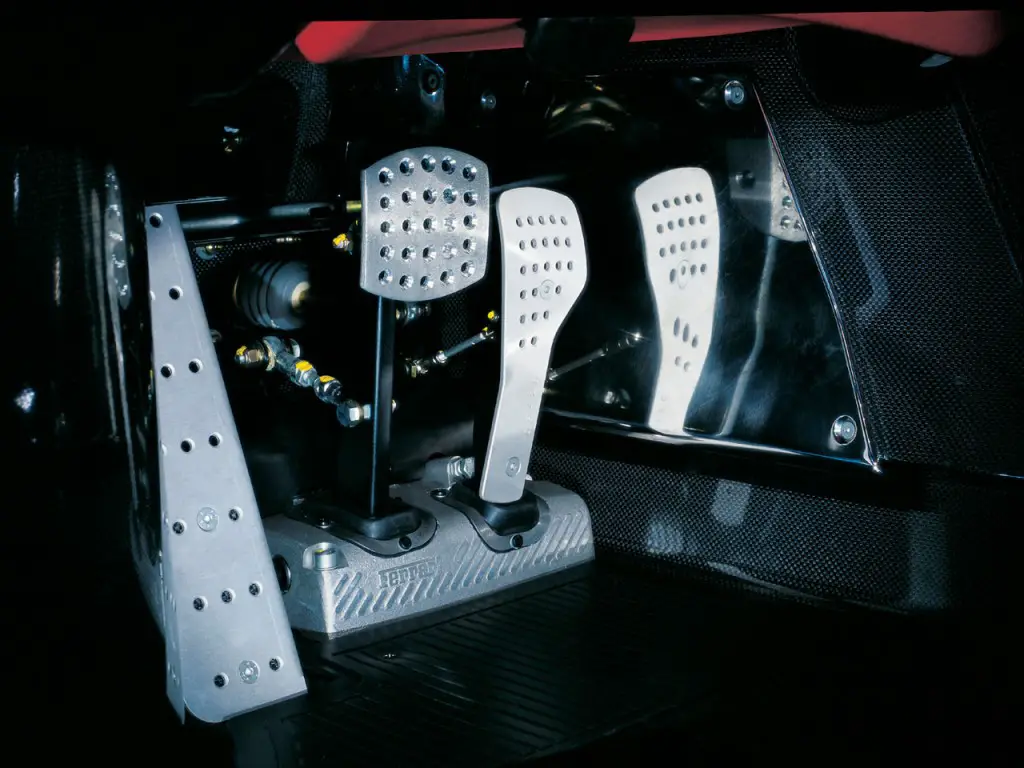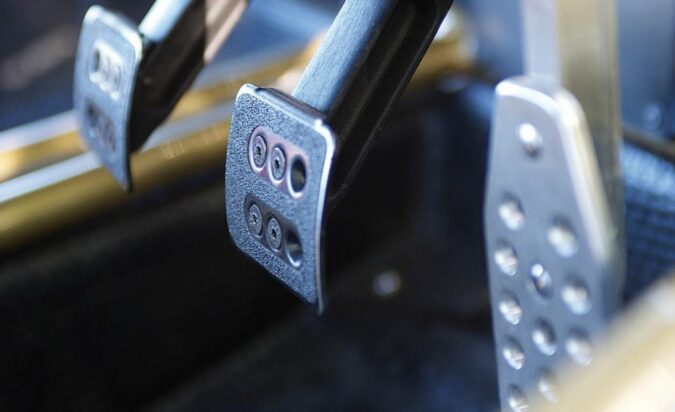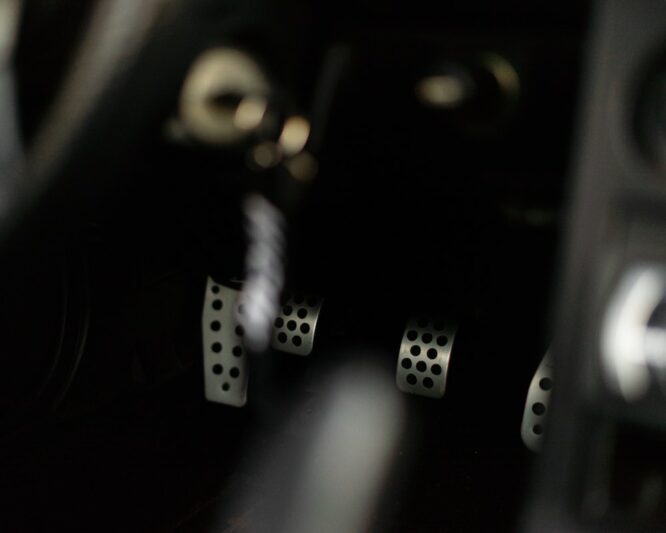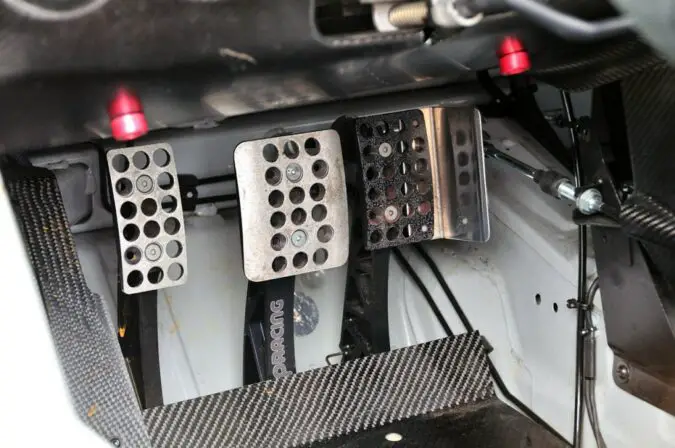Are you planning to learn how to drive and you are asking yourself which is gas and brake pedals? Well, if that is the case, then you are at the right place because this article will be all about this topic and we are going to cover everything in fine detail so you have that grasp of knowledge needed in order not to make a mistake while driving.
- Driver Pedals?
- Types Of Pedals?
- Pedals In A Manual Car
- Pedals In Automatic Car
- How To Drive Auto?
- How To Drive Manual?
- Conclusion
- FAQs
Doing your own research before you decide to go to driver’s school and hop into one of their cars with the instructor is a good idea. Mainly because you will get prepared in time and you will understand the core concepts of the car and the basic principles of how it functions.
And once you are able to do so, the learning curve will be a lot smaller and you will be able to tackle this job in no time. Not to mention that driving a little bit on some back roads or an empty parking lot is also a good thing to do with your parent or another experienced driver. But you shouldn’t worry because we are going to prepare you in no time.
First, we are going to learn what are driver’s pedals, and the different types of pedals that are out there. Then we will learn which is gas and brake pedals in both manual and automatic transmission cars. We will also learn how to drive a manual and an automatic transmission car as well. So, if you want to learn more, follow along.
What Are Driver Pedals
Now before we dive into more complex topics like which is gas and brake pedals. Let’s first introduce ourselves to the topic and learn more about pedals in general. This would be really useful for people who are not into cars and are not yet familiar with the car and its core concepts. So, let’s discuss this in detail and elaborate on it.
So, what are driver pedals? Well, driver pedals are car controls. These car controls are the core components that help the driver control the vehicle. They are understandably used in automobiles, but also they are used in buses, trucks, and other vehicles that have internal combustion engines.
The pedals are basically big metal rods that have rubber pads that are built in that way so the driver can lay their foot flat against them (make sure you don’t test whether is it illegal to drive barefoot and is it illegal to drive without shoes). These pedals can either hang from the firewall. Which is behind the dashboard. Or in some older cars, they can stand on the floor. It really depends on where the car maker installs these pedals.
What is interesting to note is that some cars can have two sets of pedals. So, why is this the case? Why a car would have two sets of pedals?
Well, there are cars that are used by the driving school. Whenever you decide to get a license, you have to go to driving school and drive with an instructor.
So, the instructor often has a set of pedals for themselves. This is quite needed in order for them to be able to make the car come to a stop if you make a mistake while driving. So, you get the idea of why this is essential. But which is gas and brake pedals? More in a bit.
Which Is Gas And Brake Pedals: Types Of Pedals
So, we have covered the pedals and learned that these are controls through which you can manipulate the car and do what you desire to do. But what are the types of pedals that are at your disposal?
Knowing the pedals and their task is a really important thing because each pedal has a different purpose. So, diving deeper into the matter and investigating its purpose should be one of your top priorities.
But this is why we are here to elaborate things for you and make your learning curve a lot smaller. So, in the following chapters, we are going to elaborate more on each of the pedals before we cover which is gas and brake pedals on your car. So, if you want to learn more, follow along.
Which Is Gas And Brake Pedals, Pedal Types #1: Gas Pedal
Now that we learned more about the pedals and covered their core concepts of how they look and where they are placed, let’s take a look at each of them before we learn which is gas and brake pedals. Let’s first start with the gas pedal on the car.
So, what is a gas pedal? Well, the gas pedal as you probably know is the pedal that you press to accelerate. A more modern term for this pedal is the throttle pedal or accelerator pedal.
The term gas pedal is pretty much outdated by today’s standards. So, you might use the word throttle or accelerator in order not to feel old-fashioned.
So, what happens when you apply the foot on this pedal? Well, when you apply your foot on this pedal the car engine starts to build up the revs. So, what are revs?
Well, revs in general are revolutions per minute. In general, the revolutions per minute, or RPM indicates how fast the crankshaft spins in a single minute.
When the engine is idling, means that you have your foot off the gas pedal, and the engine will run at idle RPM. And this is enough RPM in order for the engine not to stall.
The idle RPM is on average about 800. So, the crankshaft rotates at 800 RPM as standard. And what you do in this case when you apply the gas pedal is that by doing this you add more gas to the engine.
And not only gas but also more air. This is known as an air-to-fuel mixture. The more gas you add, the more fuel and air into the engine and the higher your RPMs are, the faster the engine will work. But which is gas and brake pedals? More in a bit.
Which Is Gas And Brake Pedals, Pedal Types #2: Brake Pedal
Now let’s cover the second very important pedal for us before we learn which is gas and brake pedals. And this is the brake pedal.
So, what is a brake pedal? Well, a brake pedal is a pedal that allows you to manipulate the brakes.
Just take note that this pedal allows you to manipulate the disc brakes only, and not the parking brake. For the parking brake, you have a special lever that you can move up and down to activate it.
The brake pedal is probably the hardest pedal to press on. Why is this the case? Well, this is the case because you don’t need to apply so much force to activate the brakes.
Only a small press would be enough in order for the car to come to a stop. And firm brake pedal indicates that you have a good braking system.
So, when it comes to this pedal, you shouldn’t expect to act spongy. A spongy brake pedal indicates a problem. Namely, the air in the braking system or possibly a bad master cylinder.
Why is this the case? Well, this is the case because the braking system is a hydraulic system. This means that the braking system needs hydraulic fluid to work.
This fluid cannot be compressed. And when you have air in the lines, you have basically air that gets trapped in the fluid and once you press the brake pedal, the air starts to compress and you end up having a spongy brake pedal. Also, the brake pedal is important to be applied when you need to come to a stop. But which is gas and brake pedals? More on that in a bit.
Which Is Gas And Brake Pedals, Pedal Types #3: Clutch Pedal
Now let’s cover the last type of pedal before we cover which is a gas and brake pedals and that is the clutch pedal. So, what is a clutch pedal?
Well, this is a type of pedal that many new vehicles don’t have. This is the type of pedal that have only vehicles with a manual transmission (to learn more, check out our guide on what’s inside of a manual transmission). So, what this means?
Well, this means that this is a pedal only included in vehicles where you go through the gears manually.
A vast number of cars in the US are using something known as an automatic transmission. This is the type of transmission where the transmission is doing the heavy lifting.
But in manual transmissions, the driver is the one that is going through the gears and shifting manually. So, for each shift, you need to engage the clutch pedal.
And what this action does is disengage the clutch from the transmission and allow you to go to the desired gear.
For a lot of beginners, this can be rather overwhelming because there are a lot of things that you have to memorize and be careful about in order to always select the desired gear.
And what a lot of people do is start to panic and move the gear lever before they press the pedal and the transmission starts to jerk and produce strong metallic noises. Some drivers do not know when to release the clutch and they burn off the clutch.
So, you get the idea why the clutch pedal needs some time to master correctly and be used in the correct way. Personally, for me, I needed to drive at least 3,000 miles to do the shifting process as it should be done. But which is gas and brake pedals? More in a bit.
Which Is Gas And Brake Pedals In A Manual Transmission Car
So, we learned more about the pedals that are installed on the car, and we learned that there is a gas pedal, a clutch pedal, and a brake pedal. The one thing that is important to us right now is to learn the layout of the pedals in the car. In what specific order the pedals are laid out in the manual transmission car? That’s right, first, we are going to cover manual transmission cars, and then we will discuss automatic transmissions. So, let’s get into it.
Let’s start from left to right. The first thing furthermost left that resembles a pedal and is not a pedal is the footrest that is installed on the car.
The footrest does not have a specific purpose than for usage to rest your foot while you are not engaging other pedals with your left leg.
Also, not all cars have a footrest. Some of them are rather utilitarian and do not include such luxury features as this footrest to rest your foot.
Nevertheless, right next to the footrest is the clutch pedal. As we noted, this pedal is used to engage and disengage the clutch so you can shift gears properly.
Then right in the middle is the brake pedal. With pressing the brake pedal, your vehicle comes to a stop. And you engage the brake pedal only when there is a need to do so.
And the furthermost right is the gas pedal or as some people call it throttle or accelerator pedal. With this pedal, you are able to accelerate the vehicle. So, the answer to the question of which is gas and brake pedals is that the middle is the brake pedal and on the right, there is the gas pedal.
Which Is Gas And Brake Pedals In An Automatic Transmission Car
Now as we discussed manual transmission cars and learned the layout of the pedals on manual transmission cars. We think that now it is time to learn more about vehicles with automatic transmissions.
As you probably know, in the US, a vast number of cars are automatic transmission cars. So, this is essential for you to know when compared to manual transmission cars. The chance of finding a manual transmission in the US is rather slim. Even people who steal cars give up when they notice a manual transmission because they don’t know how to drive them.
It is rather funny but it is true. Manual transmissions in the US are just rare and difficult to find. So, let’s take a look at which is gas and brake pedals in automatic transmission cars.
As with the case with the manual, on the far left, you will notice the footrest. This footrest resembles a pedal but it’s actually not. Then you have an empty spot and then you have the brake pedal and on the right side of the brake pedal, you have the gas pedal, also known as the throttle or accelerator pedal.
So, the answer to the question of which is gas and brake pedals in automatic transmission simply is that the left pedal is the brake pedal and the right pedal is the gas pedal.
Overall, driving an automatic transmission is rather an easy thing and there is very little effort and skill involved in the process. This is why in the following two chapters, we are going to learn how you can drive an automatic, and then we are going to learn how you can drive a manual.
How To Drive An Automatic Transmission Car
So, we learned which is gas and brake pedals in automatic transmission cars. We learned that the left is the brake pedal while the right is the gas pedal. Now let’s learn how to use these pedals. What is the purpose to learn if we do not know practically how to use our knowledge, right? So, let’s do this.
The first thing you will need is to get inside the car and sit in the driver’s seat. Buckle up with the seat belt and then you can start the starting procedure.
The first thing you need to do is to put your foot on the brake pedal and make sure that the car is in the park position.
Once you did that, you can move on to starting the car. Place the key in and turn the key over or if you have a push to start the car, press the button. Then the car should start.
Once the car engine has started, you can select drive or D on the shifter to go forward. Or select reverse or R in order to go backward.
Once you selected the desired gear, just remove the foot from the brake and apply the gas pedal slowly. Then the car should start moving and you are good to go.
If you want to stop, just apply the foot on the brake which is the left pedal and once the car stops, put it into park. When the car is in park, it means that the car will not move forward or backward. And that’s it when it comes to how to drive automatic and which is gas and brake pedals.
How To Drive A Manual Transmission
We covered which is gas and brake pedals, now let’s take a look at how to drive a manual transmission. As you probably know, driving a manual (or learning how to drive a manual car) is not the same as driving an automatic transmission. It might look easy at first but in reality, it takes a lot of time to master one of these transmissions. So, how it is done? Let’s elaborate.
First things first, you hop in the car and fasten your seatbelt. As you probably know, safety is the number one priority.
Then you press on the clutch and make sure that the car is in neutral. The gear lever should move left and right freely once you have pressed the clutch. Just make sure that the handbrake is up so, the car does not roll.
Once the car is in neutral, you can start the engine by placing the key in the ignition and turning it over. Then as the engine started you can move on to the following step.
And the following step will demand pressing down the clutch pedal and putting the car into first gear if you want to use forward, or reverse if you want to go backward. Selecting the gears from first to sixth is important. Skipping gears is not recommended because you can damage the clutch and the engine will be rather slow to respond.
So, once you selected the first gear, you can start pressing the gas pedal and then slowly releasing the clutch. You will come to a point where you feel that the clutch grips and then release it completely.
Then the car will accelerate and you can go to the following gear by repeating the same process. So, you get the idea of how it’s done.
Which Transmission Is Easier To Drive
We learned which is gas and brake pedals, now let’s take a look at which is easier to drive. And when it comes to this, we can say that automatic is much easier to drive since you don’t have a clutch and the transmission selects the gears by itself. So, if you want something easy, then going for an automatic is the way to go.
Conclusion
In this article, we have covered quite a bit when it comes to the types of pedals that are installed onto a car. First, we covered the types.
Then we covered which is gas and brake pedals on both manual and automatic transmission cars. After that, we learned how you can drive an automatic and how you can drive a manual transmission vehicle. Overall, automatic transmissions are a lot easier to use and more convenient. Still, they are rather expensive to fix when they break.
Frequently Asked Questions
Now let’s answer some frequently asked questions.
Which Pedal Is The Brake
The brake pedal on the automatic transmission car is located on the far left. While on manual transmission cars, the brake pedal is in the middle. This pedal is also a lot firmer than other pedals in the car.
Which Pedal Is The Gas
The gas pedal is located on the far right. The gas pedal is always pressed with your right foot. This pedal sits next to the brake pedal. The brake pedal is on the left side.
Is The Brake On The Left Or Right
The brake pedal is always located on the left side of automatic transmission cars. While on manual transmission cars, this pedal is located between the clutch and the gas pedal. So, we can say that it is in the middle.
Which Pedal Is The Brake In An Automatic Car
The brake pedal on automatic transmission cars is always located on the left side. While on the right side is the gas pedal. On automatic transmission vehicles, you only have two pedals, a brake pedal, and a gas pedal.
How To Start Automatic Car
In order to start a car with an automatic transmission, you first need to put your foot on the brake pedal and then push the button or turn the key, if the car is an older model. Then once started, put the car into drive and you can go forward.
How To Push Start A Automatic Car
What is bad about automatic transmission cars is that you cannot push to start them. This is not possible since transmission is the factor that limits you. Manual transmission cars, on the other hand, can be started by pushing them forward.




